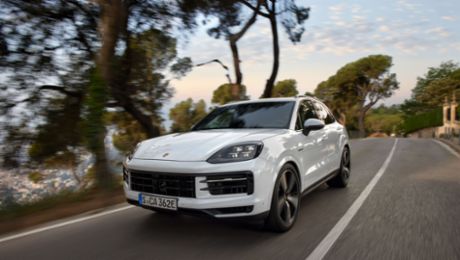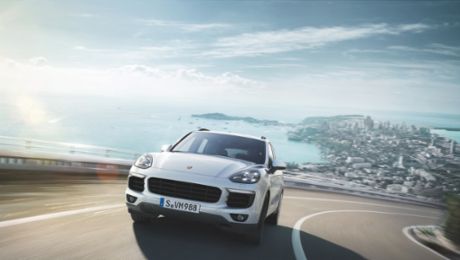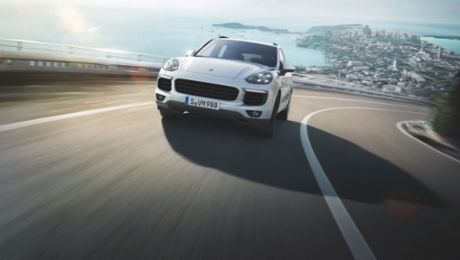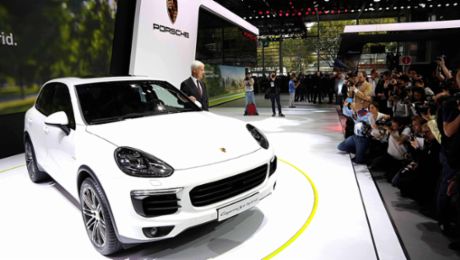It is the first plug-in hybrid in the premium SUV segment: the Porsche Cayenne S E-Hybrid. An eco rally gave representatives of the media from Germany, Switzerland and Austria the opportunity to test the vehicle under real-life conditions. In addition to stretches of motorway, the route covering a total of 333 kilometres passed through urban areas, up and down mountains and along country roads, and required two battery charge cycles.
The test drivers’ task was to find the correct balance between combustion engine and electric drive. They therefore had to master sections of the circuit in a specified time, without using up too much fuel during the process. The result was that all participants achieved an average consumption of around five litres with the 2.3-tonne SUV. “And this was not in a compact car or a scaled-down diesel but in a vehicle that is both a sports car and an SUV with system output of more than 400 hp”, as Stefan Pabeschitz of the Tiroler Tageszeitung was keen to point out. But see for yourself:
Info
The Cayenne S E-Hybrid has a lithium-ion drive battery that has energy content of 10.8 kWh, which enables pure electric driving for 18 to 36 kilometres, depending on the driving style and the topography. This enables most everyday journeys to be made without consuming any fuel or producing any local emissions. Compared to the Cayenne S Hybrid, the power output of the electric motor has more than doubled – from 34 kW to 70 kW (95 hp). The overall fuel consumption is now 3.4 l/100 km instead of the previous 8.2 l/100 km, corresponding to CO₂ emissions of 79 g/km.
Porsche is the leading supplier of premium hybrids. As the first plug-in vehicle in the luxury class, the Panamera S E-Hybrid set standards when it was launched in June 2013. The Cayenne S E-Hybrid now carries this forward-looking technology to the premium SUV segment. With its record-breaking time on the Nürburgring in September 2013 the 918 Spyder demonstrated in impressive style that even super sports cars can achieve new dimensions in performance and clearly leave conventional drive systems behind when it comes to driving dynamics and efficiency.
Consumption data
Cayenne S E-Hybrid: Combined fuel consumption: 3,4 l/100 km; CO₂ emissions: 79 g/km; Electricity consumption: 20.8 kWh/100 km
Panamera S E-Hybrid: Combined fuel consumption: 3,1 l/100 km; CO₂ emissions: 71 g/km; Electricity consumption: 16,2 kWh/100 km
918 Spyder: Combined fuel consumption: 3,1 – 3,0 l/100 km; CO₂ emissions: 72-70 g/km; Electricity consumption 12.7 kWh/100 km




